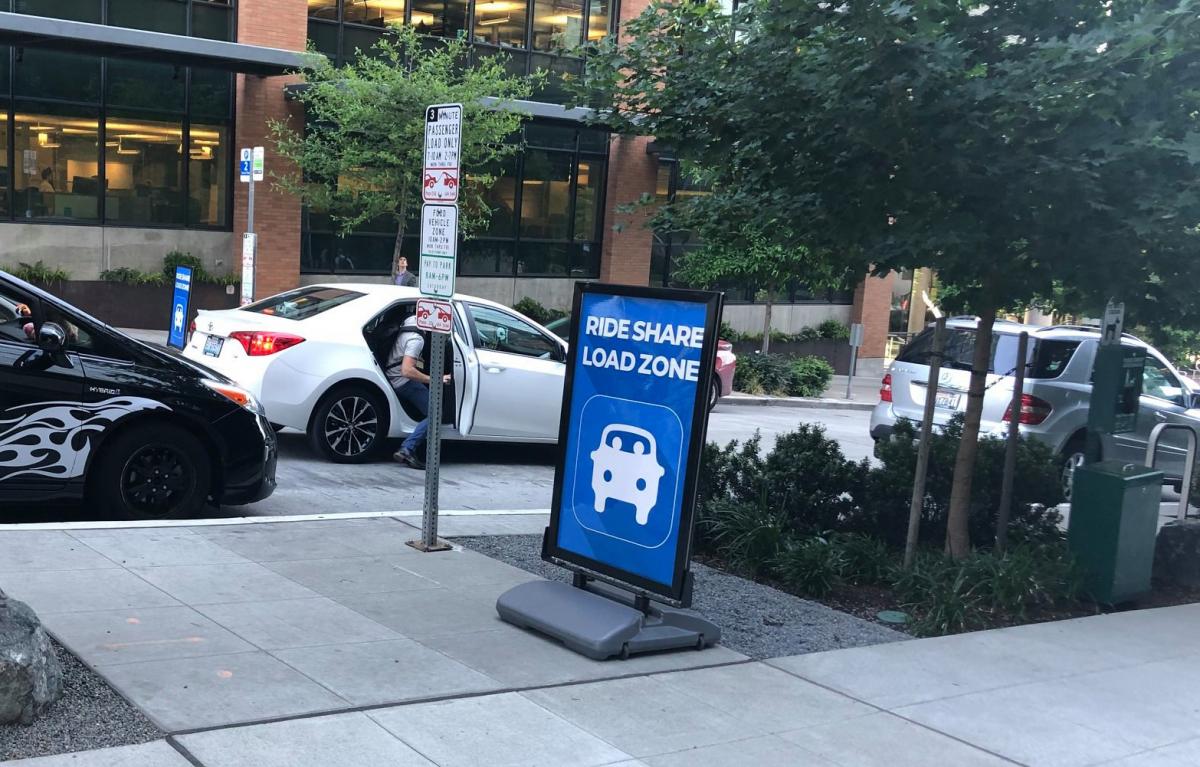December 2, 2019
Although Uber and Lyft make transport easier for many passengers, ride-hail services often make transportation more difficult for other roadway users due to frequent stops in the travel lane and double parking.

Testing designated passenger loading zones for ride-hail services. Photo credit: Urban Freight Lab
To support less disruptive and easier passenger pick-up and drop-offs for ride-hail services, researchers in the Supply Chain Transportation & Logistics Center (SCTL) Urban Freight Lab found that offering designated curbside loading zones, together with technology that guides drivers and riders to these locations, helps alleviate impacts on traffic flow.
“This research uses a data-based approach to experiment with potential solutions aimed at improving traffic flow while accommodating changing traveler demands,” says SCTL director, professor Anne Goodchild. “We are proud to provide robust analysis to support this collaborative approach to problem solving, where the public and private sector work together on shared regional challenges.”
For the study, the researchers worked with the Seattle Department of Transportation (SDOT) to install additional curbside loading zones along three blocks in the South Lake Union neighborhood, an area with considerable congestion and ride-hail service usage. The researchers also developed an app using geofence technology, which creates a virtual boundary around a geographical location, to help guide drivers and passengers to the designed loading zones.
To test the effectiveness of the loading zones and geofence technology, researchers collected data from ground observations, user surveys and video analytics for six weeks. They found an increase in drivers who stopped at the curb, rather than in the travel lane, as well as a reduction in the average amount of time it took for drivers to load and unload passengers – a savings of more than 40 seconds. Passenger satisfaction also increased by 5% for pick-ups and 34% for drop-offs.
The project was undertaken by the Urban Freight Lab in collaboration with the Sustainable Transportation Lab and SDOT. The pilot was sponsored by the Mobility Innovation Center with funding from the Seattle Department of Transportation, Amazon, King County Metro, Sound Transit, and Challenge Seattle. Geofence implementation support was provided by Uber and Lyft.